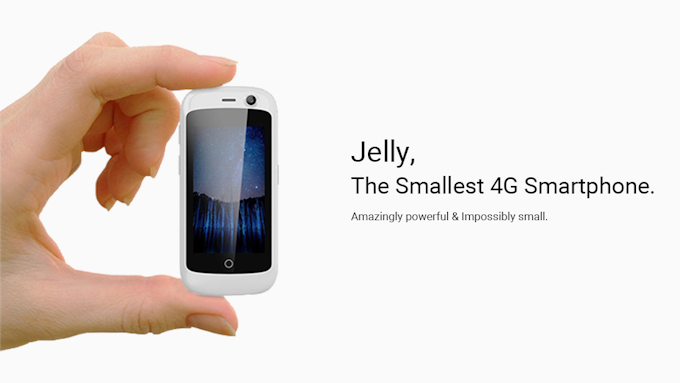The phone arrived last week, along with the optional case. The Jelly phone has just one killer feature: it is small. Imagine a smartphone with a five-inch screen cut into quarters, and you have the Jelly (it has a 2.45-inch screen). The phone arrived well packaged, with a USB cable, European plug USB charger (which Unihertz sensibly has decided to leave out of regular sales, as there are so many USB chargers in the world) and a screen protector.
Apart from being small, the Jelly looks and works like any generic android smart phone (running Android 7.0 Nougat). Some reviewers have criticized the relatively low resolution 240 x 243 pixel screen, but I found it very clear and readable. The telephone sound quality is good, and the speaker-phone works very well. The battery, with moderate use and the WiFi and GPS, turned off, lasted just over two days, which is acceptable.
The phone's primary feature is also its only problem: size. The Jelly can be hard to hold up to an ear because there is not much to hold. I found the optional case makes it easier to hold, than the shiny, slippery plastic of the phone.
The screen is large enough to dial phone numbers and peck out a text message. But this is not the device for composing documents or reading ebooks. Think of it as a step up in power and functionality from a "feature" phone, in a package around the same size.
Ten years ago, when teaching web design for mobile devices at the Australian National University, I suggested the optimal screen size for a pocket-size device was about four inches (the size of a credit or business card). Such a screen is about the same width as a traditional newspaper column (so readable) and the device incorporating it is about the largest that can comfortably fit in the average pocket. Despite the fad for large phablets, around 4 inches is still a good size for smart phones.
At 2.45 inches the screen on the Jelly is just a bit too small for general use. The Samsung Galaxy J1 Mini, with its 4 inch screen, is a better general purpose smart-phone. But if you just want something to talk on, send text messages, and very occasionally, use an App, then the Jelly works very well.
What I would change
There are currently only two accessories for the Jelly: a case with a lanyard loop on top (which I have) and a case with an armband. The case works well but could be made of softer, more rubbery, material, to make it easier to hold. Also, there doesn't seem any good reason to have two different cases: why not just one with both a loop on top for a lanyard and a slot in the back for the armband?ps: Unihertz shipped the Jelly by the promised date. But when they said "shipped" they meant it literally: they put the phones on a ship heading for Australia. It then took the phones a long time to get to Australia. You can order the full price Jelly now, and hopefully, it will arrive a bit quicker. ;-)

1 comment:
Any suggestions on where to buy a replacement battery for my Jelly phone? Unihertz only ship to the uSA and EU. https://www.unihertz.com/shop/product/battery-for-jelly-jelly-pro-13
Post a Comment